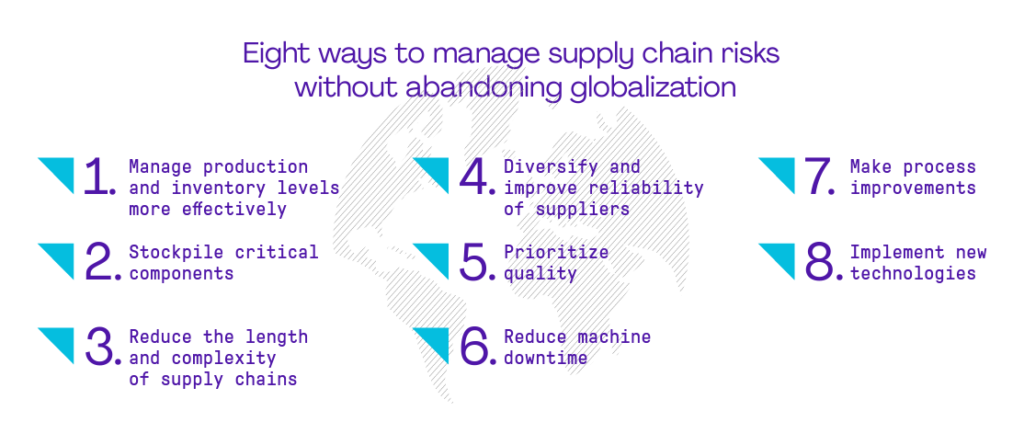
The stresses created by the pandemic have led to supply chain disorder and the rethinking of globalization. The issue is complex. Rebuilding domestic supply chains is a long-term undertaking, and permanent pullbacks are not certain. However, there are strategies that can be applied to mitigate global supply chain risks and facilitate cross-border collaboration.
The COVID-19 pandemic has exposed long-standing supply chain vulnerabilities, particularly overreliance on single-source vendors and suppliers. These vulnerabilities — combined with demand spikes, labor shortages, weather events and other factors — have decimated port and shipping capacity, pushed transport costs to new highs, created massive shortages of goods and components, raised consumer prices and increased inflation. As a result, some countries are looking to restart core manufacturing industries and diversify single-source supply chains.
A key question is, given existing skills and worker shortages`: Where will talent come from in countries that abandoned traditional manufacturing capabilities? PMI research shows the global manufacturing and construction sector has one of the biggest gaps between current and projected jobs in project management-oriented employment (PMOE), with the growth rate of 13.2% in PMOE expected to be higher than for overall employment in this sector. Training will take time and investment. So will rebuilding domestic supply chains. For example, it takes multiple years and billions of dollars to construct a semiconductor fabrication plant. Electric vehicle (EV) battery production takes even longer to ramp up, as does attaining self-sufficiency in rare-earth extraction, processing and refining.
Globalization has recovered from severe setbacks in the past and remains at historically high levels. The DHL Global Connectedness Index 2021 Update, a measure of U.S. business sentiment, found companies eager to increase their international presence. Moreover, global digital connectedness helped many businesses survive the pandemic, but also risked opening a digital divide, the possibility of poorer, less-connected countries falling behind. The report concluded that stronger ties would accelerate the world’s recovery.
Regional supply chain strategies, within a global framework, can also improve resilience to worldwide events while taking advantage of global economic shifts. Members of the Association of Southeast Asian Nations (ASEAN) and six regional partners, including Australia and China, recently signed what is arguably the largest free trade agreement in history, the Regional Comprehensive Economic Partnership (RCEP).
Project managers can also find ways to facilitate cross-border projects through remote collaboration and knowledge sharing. Indeed, we cannot go it alone if we are to find solutions to the world’s biggest environmental, social and governance challenges. As globalization recalibrates, there is hope that it may emerge kinder and gentler, with a greater social consciousness at its core.


Source: Global Megatrends © 2022 Project Management Institute, Inc.